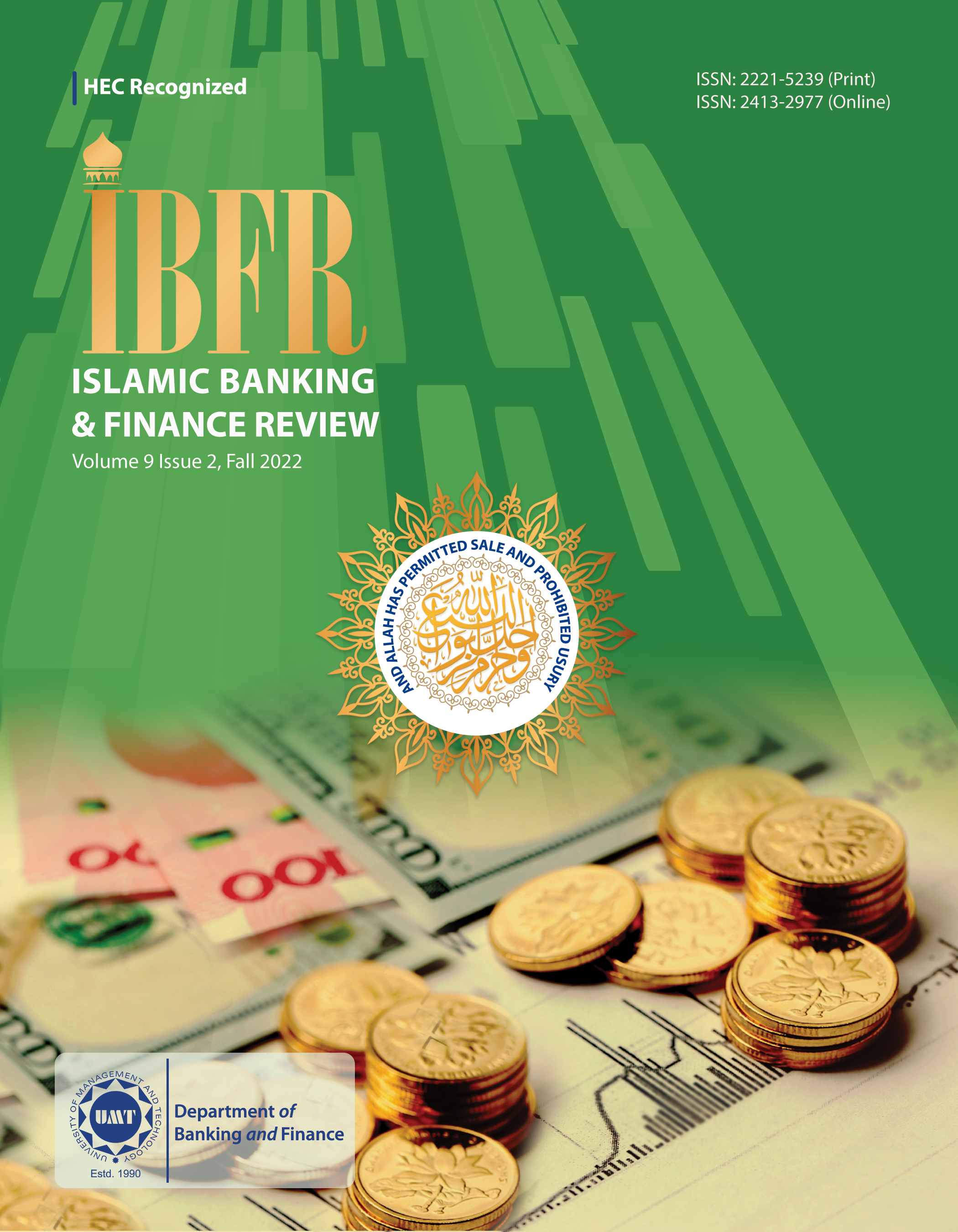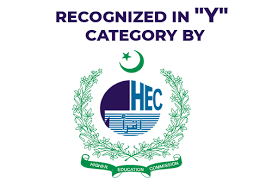Evaluating the Governance Framework of Islamic Microfinance Institutions (IMFIs) in Pakistan and its Compatibility with the Federal Shari’at Court Judgment
Abstract
 Abstract Views: 68
Abstract Views: 68
Microfinance is a growing industry for an un-privileged segment of the society that caters various forms of financing. However, governance and regulations are still a major concern for both conventional and Islamic microfinance industries. As the microfinance industry expanding and scaling up, the decision making and operational process is becoming complex. Therefore, good governance is a vital need for credibility and integrity of this industry to accomplish their social, financial and spiritual goals. Federal Shari’at Court (FSC), in its recent decision, declared riba as illegal and repugnant to Islamic Law. Furthermore, FSC asked government to eliminate riba from economy within five years. Despite achieving maturity level, Shari’ah compliant microfinance capture only 7% market share of the microfinance industry. Therefore, it is a big challenge to implement FSC decision within five years. In this study, we evaluated the governance framework of Islamic microfinance institutions and its compatibility and reliability in order to comply in letter and spirit with FSC order in the light of Shari’ah. This study is survey based and also relies on secondary data of whole Islamic microfinance industry of Pakistan as a sample size. Responses received from top management of IMFIs and analyzed through descriptive statistics and frequency analysis. The results depict that governance framework needs to be improved as per changing environment, specifically, in the areas of acquiring the services of Shari’ah advisor, Shari’ah compliance, Shari’ah audit, impact assessment evaluation, reporting mechanism and identification of poverty stages. The existing regulator guidelines also need to be improved in contest of financial support. In conclusion, strong governance approach with true spirit of Shari’ah, will definitely make it possible to achieve the target given by FSC.
Downloads
References
Akmal, P. Z. (2014). A Comparative Analysis of Customers’ Satisfaction for Conventional and Islamic Insurance Companies in Pakistan. International Journal of Economics and Finance, 36-50.
Alam, M. M., Said, J., & Hassan, S. (2015). Performance of Islamic microcredit in perspective of maqasid al-shariah: case study on Amanah Ikhtiar Malaysia. https://www.emerald.com/insight/content/doi/10.1108/H-12-2014-0072/full/html.
Almuntazar. (2021). https://www.sibtayn.com/. Retrieved from www.sibtayn.com/: https://www.sibtayn.com/en/index.php?option=com_tags&view=tag&id=329:taloot
Fithria. A , M. S. (2021). Management ownership and the performance of Islamic microfinance institutions: a panel data analysis of Indonesian Islamic rural banks. International Journal of Islamic and Middle Eastern Finance and Management, 950-966.
Aslam, M. N. (2016). Islamic Microfinance Model To Reduce Poverty: Pakistan’s Case. International Journal of Management Sciences and Business Research, 1-9.
Wediawati. B, N. E. (2018). Sustainability of islamic microfinance in indonesia: a holistic approach. Academy of Strategic Management Journal, 1-14.
Bhatti, H. (2022). Federal Shariat Court declares interest-based banking system against Sharia. Dawn News.
Lapenu. C, D. P. (2006). Handbook for the analysis of the governance of microfinance. Finnish Supplementary Funds.
Consultative Group to Assist the Poor (CGAP). (2006). CGAP- Access for all building inclusive financial system. Washington: The International Bank for Reconstruction and Development / The World Bank.
Dusuki, A. W., & Abdullah, N. I. (2007). Maqasid al-Shari`ah, Maslahah, and Corporate Social Responsibility. The American Journal of Islamic Social Sciences, 25-45.
Federal Shari'at Court. (2022, April 28). Shariat Petition No.30-L of 1991. Islamabad, Pakistan: Federal Shari'at Court of Pakistan.
Federal Shari'at Court Judgement on Riba, Shariat Petition No.30-L of 1991 (Federal Shari'at Court- Pakistan April 28, 2022).
Finance Division- Goverment of Pakistan. (2007). Overview of the economy. Goverment of Pakistan- Finance Division.
Nghiem. H. S, T. C. (2006). The efficiency of microfinance in vietnam: evidence from ngo schemes in the north and the central regions. International Journal of Environmental, Cultural, Economic and Social Sustainability, 71-78
Tijani I. M, R. H. (2020). Shariah Governance for Islamic Microfinance Industry. Journal of Islam in Asia, 144-161.
Islamabad Capital Territory Adminstration. (2022). Retrieved from http://ictadministration.gov.pk/: http://ictadministration.gov.pk/services/registration-of-ngo-npo/#:~:text=avoid%20legal%20proceedings.-,Documents%20Required%3A,with%20mobile%20numbers%20(two%20copies)
Khan, M. O. (2008). Islamic microfinance development challanges and initiatives. IRTI- Islamic Development Bank, 1-98.
Lakhi, M., & Gul-e-Rana. (2014). Islamic Taxation “Zakāh” And Its Potential To Remove The Taxation Issues Related To Islamic Financial Industry. Proceedings Of Roundtable Discussion On Taxation Of Islamic Finance. Puri Pujangga, Ukm Bangi Isbn.
Malik, H. (2022). FSC gives govt five years to eliminate Riba. The Express Tribune.
Mamiza Haq, M. H. (2008). Regulation of Microfinance Institutions in Asia: A Comparative Analysis . International Review of Business Research Papers, 421-450.
Aslam M.N , M. A. (2021). Impact of COVID-19 on Islamic Microfinance Institutions (IMFIs) and Poverty in Pakistan. COMSATS Journal of Islamic Finance, 1-19.
Muhammad, L., Gul-E-Rana, Saba, I., & Aziz, S. (2019). Maqāṣid al-Sharīʿah and Islamic Finance Industry: Addressing the Concerns. Journal of Islamic banking and Management.
Naqvi, I. H., Aziz, S., Zaidi, S. A., & Kashif-ur-Rehman. (2011). The model of good governance in Islam. African Journal of Business Management.
Okoye. N, J. S. (2017). Microfinance Regulation and Effective Corporate Governance in Nigeria and Zambia. International Journal of Law and Management, 1-40.
Pakistan Microfinance Network. (2020). Pakistan Microfinance Review- 2020 Annual State of the Industry Report. Pakistan Microfinance Network.
Strom .R. O, B. E. (2014). Female leadership, performance, and governance in microfinance institutions. Journal of Banking & Finance, 60-75.
Galema R, R. l. (2012). Governance and Microfinance Instiutions. Research handbook on international banking and governance.
Mersland, R. Ø. (2007). Performance and corporate governance in microfinance institutions. Journal of Banking and Finance, 662-669.
Kassim. Q, R. H. (2018). Good Governance and Sustainability in Islamic Microfinance Institutions. Journal of Islamic Finance, 21-28.
SBP. (2022). Retrieved from www.sbp.org.pk: https://www.sbp.org.pk/cpd/pdf/PEP.pdf
SECP. (2022). Retrieved from www.secp.gov.pk: https://www.secp.gov.pk/document/license-status
Seitanidi, M. M., & Crane, A. (2009). Implementing CSR through partnerships: understanding the selection, design and institutionalisation of nonprofit-business partnerships. Journal of Business Ethics, 413-429.
Mansori. S, C. S. (2015). A Shariah Perspective Review on Islamic Microfinance. Asian Social Science, 273-280.
Sheikh, A. A. (2013). Challenges Faced by the Model of Islamic Microfinance for the Development of Micro Entrepreneurs and SMEs in Rural Pakistan. International SAMANM Journal of Finance and Accounting, 17-38.
Khalid. S.N. A, S. S. (2019). A social performance management framework for islamic microfinance institutions. The Journal of Muamalat and Islamic Finance Research, 53-69.
State Bank of Pakistan. (2011). Strategic Framework for Sustainable Microfinance in Pakistan. State Bank of Pakistan.
State Bank of Pakistan. (2014). Prudential regulation for Microfinance banks. Agriculture credit & Microfinance department.
Thapa, G. (2006). Sustainability and Governance of Microfinance Institutions: Recent Experiences and Some Lessons for Southeast Asia. Asian Journal of Agriculture and Development, 17-38.
Copyright (c) 2022 Muhammad Naveed Aslam Aslam, Abdul Rashid, Abdul Karim Usman

This work is licensed under a Creative Commons Attribution 4.0 International License.
Authors retain copyright and grant the journal right of first publication with the work simultaneously licensed under a Creative Commons Attribution (CC-BY) 4.0 License that allows others to share the work with an acknowledgement of the work’s authorship and initial publication in this journal.












